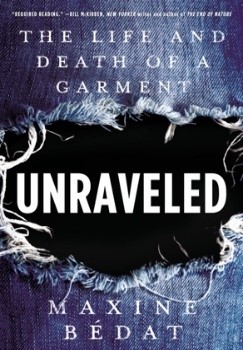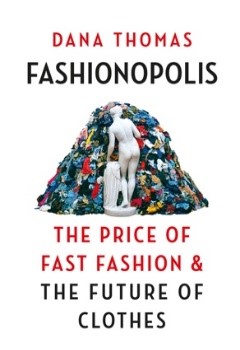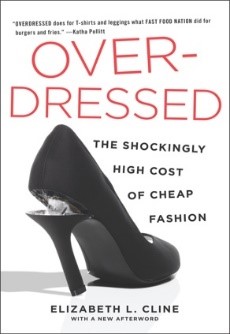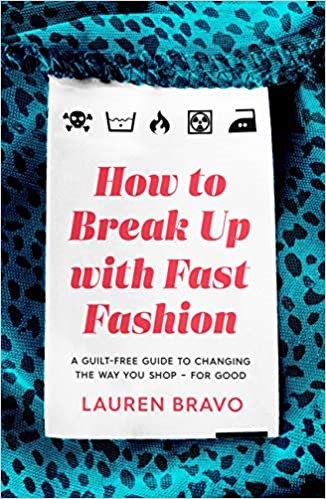Fast Fashion
Fast Fashion
This resource guide was curated to complement the Read to be Sure (RTBS) Learning Package on Fast Fashion.
Guide Index
Introduction
“Fast fashion,” a term used to describe inexpensive and widely-available “in the moment” garments, has changed the way people buy and dispose of clothing. By making available large quantities of clothing at throwaway prices, fast fashion has emerged as a dominant business model, causing garment consumption to soar. While this trend may be considered as the “democratisation” of fashion in which the latest styles are available to all classes of consumers, the human and environmental health risks associated with fast fashion are said to be hidden throughout the life-cycle of each piece of clothing.
Fast fashion’s speedy supply chains rely on outsourced and often underpaid labour from factory workers overseas, and the process is environmentally damaging and resource-intensive. Critics claim that the “blindingly fast pace at which fast fashion clothes are manufactured, worn and discarded means that they have become more disposable, more commodities than keepsakes, and shoppers are essentially conditioned to expect a constant stream of new items.”
This resource guide shines the spotlight on the phenomenon of fast fashion, why it is so popular, its environmental impacts, and alternative fashion trends that counter it.
The guide provides supplementary resources for those who are keen to further explore this topic. You can also visit to search for more resources. If you would like to view other resource guides created by our librarians, please visit Reference@NLB.
Websites
Ultra fast-fashion is eating the world
Even during the COVID-19 pandemic with the world economy taking a massive hit, demand for “cheap, cute clothes” is said to have persisted. While the rest of the retail sector struggled, a new cohort of companies such as Boohoo and Asos, known as ultra-fast fashion, thrived. Asos’ sales rose rapidly from March to June 2020 and Boohoo was reported to have had its “best quarter ever.” These companies leveraged digital platforms to fulfill their customers’ demand for fast fashion.
Monroe, R. (2021, February 6). Ultra fast-fashion is eating the world. The Atlantic. Retrieved September 10, 2021, from
Why professional women are breaking up with fast fashion
With the killing of over 1,000 factory workers in the Rana Plaza clothing factory in Bangladesh in 2013, professional women have started wondering about the true cost of making fast fashion clothes. Many fast fashion brands outsource their production overseas where garments are produced with unfair pay and poor work conditions. Professional women who support sustainability are reported to have now turned to circular fashion, a system in which articles are circulated and reused for as long as they can be, before being decomposed safely.
Cotler, A. (2020, November 16). Why professional women are breaking up with fast fashion. Forbes. Retrieved September 10, 2021, from
Fast fashion is on the rampage, with the UK at the head of the charge
Fashion consumers in the United Kingdom are reported to be among the most voracious in the world. One in three young women, the largest segment of consumers, consider garments worn once or twice to be old. UK consumers sent 300,000 tonnes of textiles to be burned or dumped in landfills in 2018.
Siegle, L. (2019, June 21). Fast fashion is on the rampage, with the UK at the head of the charge. The Guardian. Retrieved September 10, 2021, from
Videos
The true cost of fast fashion
Fast fashion allows consumers to buy more clothes, but they are wearing them less often and disposing of them at an unprecedented rate. Millions of tonnes of clothes are reported to be ending up in landfills every year. This video takes a look at how the fashion industry can continue to grow while addressing the environmental need for people to buy fewer clothes.
The true cost of fast fashion. (2018, November 30). The Economist. Retrieved September 10, 2021, from
Singapore swap shops offer alternative to fast fashion
Several swapping initiatives from permanent shops to pop-up events have appeared in Singapore in a bid to encourage consumers to be environmentally conscious. However, challenges remain in persuading Singaporeans to swap rather than shop.
Singapore swap shops offer alternative to fast fashion. (2021, February 18). The Independent. Retrieved September 10, 2021, from
Fast fashion’s effect on people, the planet, and you
The speaker in this video laments that “fast fashion is fooling us to believe we are saving money when in reality all we are doing is buying more of a lower quality product.” More importantly, “fast fashion is destroying people in the planet depending on where the products are made, how they are made, and where they ultimately end up.”
Fast fashion’s effect on people, the planet, and you. (2017, March 9). TEDx Talks. Retrieved September 10, 2021, from
H&M and Zara: Can fast fashion be eco-friendly?
Inditex, Zara’s parent company and H&M group are two of the biggest fashion retailers in the world and both have collections that aim to reduce the environmental impact of making clothes. The two fashion giants are saying they are making their entire brands more sustainable. This video takes a look at these promises and considers if the fashion giants can deliver on them.
H&M and Zara: Can fast fashion be eco-friendly? (2021, January 8). DW Planet A. Retrieved September 10, 2021, from
Journal Articles
Are low- and middle-income countries profiting from fast fashion?
Low- and middle-income countries have made substantial economic progress in the past two decades due to the fast fashion industry. This, however, has come at a high social and environmental cost. This article suggests that now is the right time to find a balance between economic development and harm caused to the citizens of these nations.
Khurana, K., & S. S. Muthu. (2021, May). Are low- and middle-income countries profiting from fast fashion? Journal of Fashion Marketing and Management: An International Journal. Retrieved April 6, 2024 from https://www.emerald.com/insight/content/doi/10.1108/JFMM-12-2020-0260/full/html
Consumer adoption of fast-fashion, differences of perceptions, and the role of motivations across the adoption groups
Adopters of fast fashion are classified as “innovators”, “early adopters”, “early majority”, “late majority”, and “laggards”. This research finds that perceptions of fast-fashion vary across different consumer adoption groups in terms of “being in-style products”, “expressing self-image”, “imitating luxury fashion products”, and “frequent renewal of collections”.
Okur, N. (2021). Consumer adoption of fast-fashion, differences of perceptions, and the role of motivations across the adoption groups. AUTEX Research Journal. Retrieved April 6, 2024, from https://www.degruyter.com/document/doi/10.2478/aut-2021-0024/html?lang=en
See it. Like it. Buy it. Repeat. Fast fashion gets faster.
This article highlights that “while trends used to be set twice a year in the pages of Vogue and on Paris runways, now they sprout up daily from the Instagram feeds of fashion models and celebrities.” Retailers are said to have recognised that “fashion’s centre of gravity has shifted, and have found a way to capitalise on it.”
Porter, J. (2018, November). See it. Like it. Buy it. Repeat. Fast fashion gets faster. Inc., 40 (7).
Retrieved from EBSCOhost Academic Search Complete via NLB’s eResources website. (myLibrary ID is required to access this article.)
Is slow fashion the new luxury? If fast fashion defined the 2010s, slow fashion may be the marker of the new decade
For years, the fashion industry is said to have pushed mass production and consumption so rapidly that, “quick-turn, quick-churn fashion is now falling out of favour and making way for its more measured counterpart.” The COVID-19 pandemic is seen to have helped foster a “buy less, buy better mentality with interest sparking in products with more value and longevity compared to disposable fast fashion.”
Donaldson, T. (2020, September 15). Is slow fashion the new luxury? If fast fashion defined the 2010s, slow fashion may be the marker of the new decade. Women's Wear Daily, p. 42.
Retrieved from EBSCOhost Business Source Complete via NLB’s eResources website. (myLibrary ID is required to access this article.)
The global environmental injustice of fast fashion
This paper posits that while fast fashion offers consumers an opportunity to buy more clothes for less, those who work in or live near textile manufacturing facilities bear a disproportionate burden of environmental health hazards. Furthermore, increased consumption patterns are also said to have created millions of tonnes of textile waste in landfills and unregulated settings.
Bick, R., Halsey, E., & Ekenga, C. C. (2018, December 12). The global environmental injustice of fast fashion. Environmental Health, 17 (1).
Retrieved from EBSCOhost Academic Search Complete via NLB’s eResources website. (myLibrary ID is required to access this article.)
A multi-dimensional view of consumer value to explain socially-responsible consumer behavior: A fuzzy-set analysis of Generation Y’s fast-fashion consumers
Generation Y consumers are believed to be aware of the different environmental problems affecting society. However, their attitudes or intentions may not actually translate into action, particularly in the fashion domain. This study examines the consumption values that explain the presence or absence of socially-responsible behaviour among Gen Y fast fashion consumers.
Pauluzzo, R., & Mason, M. C. (2021, April). A multi-dimensional view of consumer value to explain socially-responsible consumer behavior: A fuzzy-set analysis of Generation Y’s fast-fashion consumers. Journal of Marketing Theory & Practice, p. 1-22.
Retrieved from EBSCOhost Business Source Complete via NLB’s eResources website. (myLibrary ID is required to access this article.)
E-Books
Unraveled: The life and death of a garment

All rights reserved, New York: Penguin, 2021.
This book traces the life-cycle of a pair of jeans. Raw materials from a Texas cotton farm are sent for dyeing and weaving to factories in China, and then sewn in Bangladesh and Sri Lanka, before being transported back to the United States. The jeans’ journey usually ends in a landfill in Africa. The book sheds light on the hazards posed by fast fashion and how the "trend-based aesthetic of celebrity/influencer culture" has contributed to the rise of disposable fashion.
Bedat, M. (2021). Unraveled: The life and death of a garment. New York: Penguin Publishing Group.
Retrieved from OverDrive. (myLibrary ID is required to access the eBook)
Fashionopolis: The price of fast fashion and the future of clothes

All rights reserved, New York: Penguin Press, 2019.
This book outlines the human and environmental cost of fast fashion and reports on the efforts of those trying to make fast fashion less damaging and wasteful. It examines how online retailing and the technology revolution have resulted in an associated rise in the exploitation of the environment, labour and intellectual property.
Thomas, D. (2019). Fashionopolis: The price of fast fashion and the future of clothes. New York: Penguin Press.
Retrieved from OverDrive. (myLibrary ID is required to access the eBook)
Over-dressed: The shockingly high cost of cheap fashion

All rights reserved, New York: Portfolio, 2012
This book explores the rise of America’s “addiction to cheap fashion, the true nature of cheap fashion, the rise of budget clothing chains, and the death of middle-market and independent retailers.” The author also explores how cheap fashion harms the charity thrift shops and textile recyclers where most of the disposed clothing ends up.
Cline, E. (2012). Over-dressed: The shockingly high cost of cheap fashion. New York: Portfolio.
Retrieved from OverDrive. (myLibrary ID is required to access the eBook)
Books
How to break up with fast fashion

All rights reserved, London: Headline Home, 2020.
The author rethinks her “affair with fast fashion in search of a slower, saner way of dressing.” She helps people embrace more sustainable ways of shopping -- from the clothes swap to the charity shop. “Full of refreshing honesty and realistic advice,” she seeks to, “inspire you to repair, recycle and give your unloved items a new lease of life without sacrificing your style.”
Bravo, L. (2020). How to break up with fast fashion. London: Headline
Home.
(Call no.: 391 BRA)
Authors
The resource guide was prepared in September 2021 by Anasuya Soundararajan & Asrina Tanuri, Librarians at the National Library, Singapore.
The information in this resource guide is valid as at October 2021 and correct as far as we are able to ascertain from our sources. It is not intended to be an exhaustive or complete history on the subject. Please contact the Library for further reading materials on the topic.
All Rights Reserved. National Library Board Singapore 2021.

